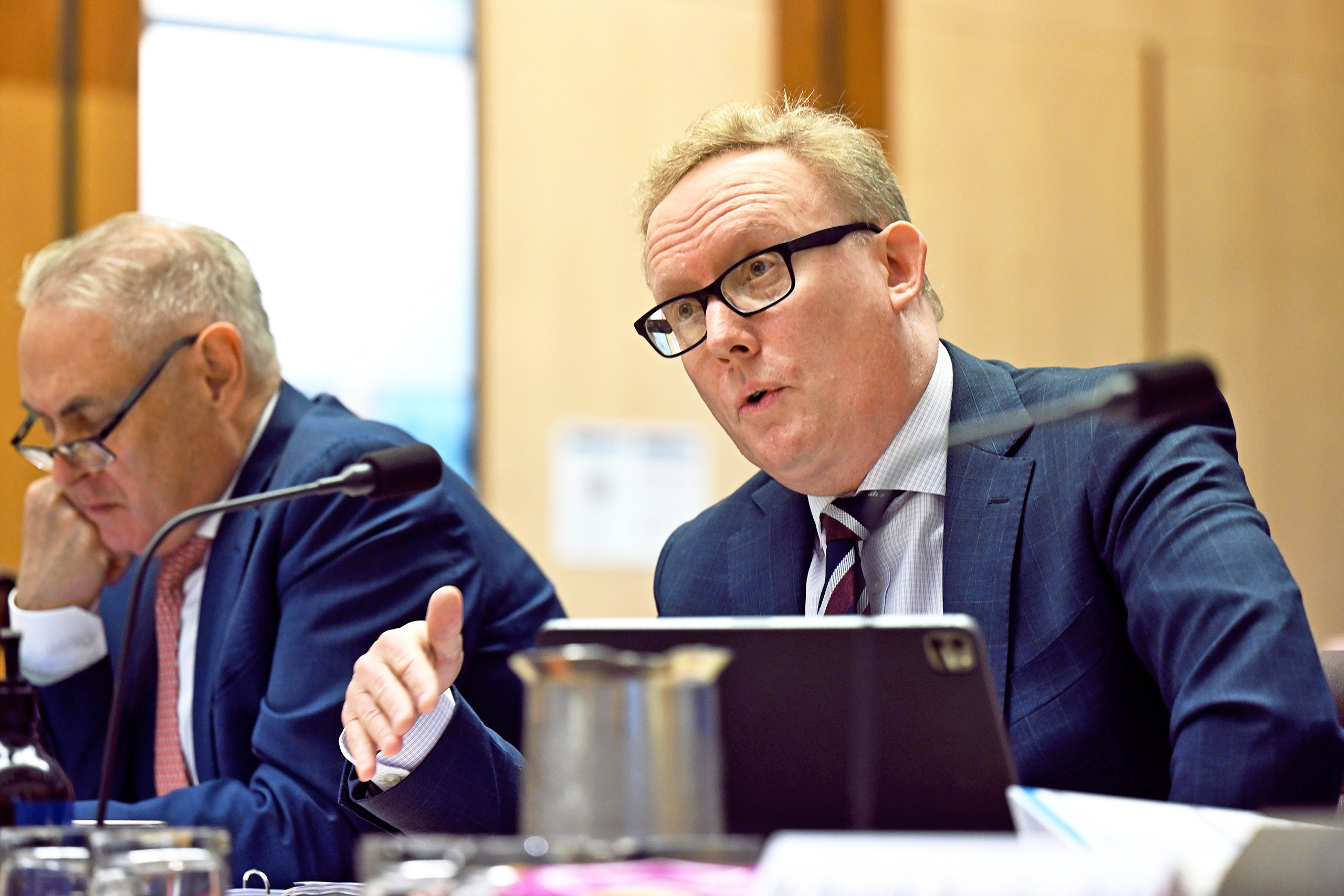In 2011, back when Julia Gillard was prime minister, the federal government brought together most of its social security functions — Centrelink, Medicare and much more — into a new Department of Human Services, or DHS. It had 37,000 staff; it was responsible for around a third of federal spending; its work directly affected the lives of just about all Australians. It was a big show and a big deal.
The following year, presumably to help consolidate the breadth of its responsibilities, the DHS submitted itself to a “capability review,” part of a new program being organised by the Public Service Commission. The review was conducted by a New Zealand public servant, a private sector executive and a Commonwealth official.
All organisational reviews must be self-limiting in some way but the Commonwealth’s “capability reviews” are perhaps more so than most. The 2012 version concentrated on leadership, strategy and delivery. It was proudly “forward looking,” “short and sharp” and took a bird’s eye view. It concentrated “primarily on the views of senior leadership” although with a little consultation with “external stakeholders.” Superficiality was inherent in the process.
So the review’s recommendations, while possibly helpful, were mainly vague and unmechanical. “Operate as a high-performing team,” it admonished, foster “more open communication,” be “pro-active in enabling a unified… culture,” develop a “concrete service design map,” “move from a transactional view to a holistic view” and “place the customer at the centre.” Well why not?
The review provided a rosy view of the DHS, which it reckoned could “be a significant contributor to good policy outcomes.” It also said that the department was blessed with “a highly capable Secretary, who is widely respected and well skilled to lead the department into a challenging future.”
That secretary was Ms Kathryn Campbell, whose minister later became that self-proclaimed tough welfare cop, the Hon Scott Morrison. Together they brought forth robodebt, whose consequences have been graphically described by the Holmes royal commission and in Rick Morton’s book, Mean Streak. It’s a story that has at its heart undiluted political and bureaucratic careerism on which no restraints have yet been imposed.
In 2019, the functions of the DHS were placed in Services Australia, or SA, an executive agency that is neither fish nor fowl. It isn’t a department, and it isn’t a statutory authority; it’s something in-between. Now this new agency has had its own capability review, a procedure dropped by the last Coalition government but now revived.
The SA review, whose undated report was posted on the Public Service Commission’s website on 29 January, was conducted by David Thodey a semi-ubiquitous reviewer for the Commonwealth, Cheryl-ann Moy, a facilitator and coach, and senior officers from the Tax Office and the Parliamentary Services Department. It was supported by staff from the Public Service Commission.
On the evidence of this report, the review methodology doesn’t seem to have changed much since 2012. Its “framework” is an “excellence horizon,” which tries to describe which capabilities are needed, and gaps in “core domains” listed as “Leadership and Culture, Collaboration, Delivery, Workforce and Enabling Functions.”
Like its predecessors, the review professes to be “forward facing” and doesn’t offer what it calls “critiques of the agency’s past performance.” Yes, better not cast a cold eye on the ogre in the room, robodebt: presumably that would awkwardly complicate matters and, it might be supposed, we all might need to “move on.”
Anyway, Thodey and his associates interviewed forty “stakeholders,” ran eleven staff workshops, sent out a staff survey that snagged a slim 18 per cent response rate, visited a couple of offices and did some “desk top research.” That done, they presumably left the staff at the Public Service Commission to give them a draft report.
The resulting eighty-page document is excruciating. It swarms with clichés and platitudes mixed into a dispiriting cascade of managerialist mumbo jumbo. Sensitive readers might be reaching for the hemlock at about the halfway mark, or even earlier.
Without wanting to rub it in, and to adapt the honeyed words of a literature Nobel prize winner brought back into vogue by a recent film, the report spends too much time playing on the penny whistle and poisoning us with words.
It is suffused with brain bruising notions such “agility,” “convergence,” “pro-activity” of course, “customer focus” and “customer-centric,” “overarching strategy,” “co-design,” “alignment and prioritisation” (which is being “driven”), “escalation pathways,” a “pro-active posture,” “customer relationship management tools,” “master program tribes,” “oversight mechanisms,” “collective vision” and on and on.
The review allocates marks on nineteen elements within the “core domains” specified by the prescribed methodology. Four of these elements are regarded as “embedded,” fourteen “developing” and one “emerging.” The relationship of this categorisation to evidence is opaque.
Anyway, the review says SA should focus on “enhancing the customer experience, improving the quality of government services, continuing organisational strategy development and driving cultural change and advancing digital and technological capabilities.”
On “capability uplift,” it’s suggested that SA align “the service delivery business to the agency’s vision,” get senior staff with the right skills, develop a “culture of trust internally” and get the skills and capabilities needed in “a digitally enabled world.” Could SA have been unaware of these high level imperatives? If it wasn’t, it’s now been told.
The point is that the review’s advice, no matter how well-meaning, is proverbial and not especially helpful.
That’s not to say it doesn’t get to at least some nitty-gritty. But when it does it struggles. For example, it’s alleged that “competitive pay will impede the ability to attract and retain talent.” It’s claimed part of the reason for this is that only 57 per cent of staff think they’re fairly paid and SA staff turnover rates are around 15 per cent. Federal agency pay rates have been allowed to diverge and it’s likely SA is losing staff to other departments.
Although “work is underway to align agency pay rates,” the current rate of progress means this would take decades, because (among other things) the federal government doesn’t possess a rational remuneration policy for its staff. In the meantime, the review says SA might “bolster non-monetary benefits” for its staff. Breaths should not be held about the usefulness of that recommendation.
The head of SA, David Hazlehurst, has welcomed the review. Like Kathryn Campbell in 2012, he says it has come at a “pivotal” time and promises to get on with following its advice.
It’s to be hoped he does a more convincing job than Stephanie Foster, the head of the Department of Home Affairs, who following a capability review of her department brought forth a document titled “Transformation Action on a Page.” It was distinguished by notable inanities including the promises of a “sophisticated foresighting capability” and offering “industry a ‘single window’ and the community ‘no wrong door.’”
Around half a dozen capability reviews have been conducted in the revived series and they’ve been described as “pilots.” It’s to be hoped lessons can be learned and adjustments made. Capability in the federal public service has taken heavy blows over the past fifteen years and the community has a strong interest in its recovery.
So how might capability reviews be made more useful?
First, the “forward facing” limits should be abandoned and reviewers should be encouraged to take performance into account. Without doing so it’s almost impossible to make a sound assessment of capability. In the SA case, it is beyond understanding that a capability review should not deeply reflect on the horrors of robodebt and comment on how to avoid a repeat.
Second, the further restricting and uniform review “framework” of “Excellence Horizons” and “Core Domains” — which are based on an assumption that the vast variety of Commonwealth agencies can be considered on a like basis — should be abandoned. Not only do they appear to confine the reviews to box-ticking based on soft and imprecise judgments but they are limiting.
In SA’s case, for example, there is no consideration of what organisational structure might better enable it to do its job. The robodebt experience would suggest it would more satisfactorily perform its role better as an independent statutory authority, where decisions about the entitlement of individuals would be better protected from ministerial intervention and the organisation as a whole better insulated from the rampant ministerial ambition to which it was introduced by Mr Morrison.
Third, reviewers should be encouraged to write their own reports rather than rely on staff in the Public Service Commission to give them drafts, if indeed that’s what’s happening. That is to say, they should not outsource their thinking. They should also be urged to have their reports expressed in plain English rather than the clotted, obscure jargon that has characterised recent endeavours, some of which looks like AI working on half-flat batteries.
SA is a critically important government organisation whose work affects millions of citizens. It seems, on the whole, to do a pretty good job. No doubt it can do better with proper care and attention, although its cause will not be much advanced by the report of Mr Thodey and his associates. What is needed is a capability review of the capability review system. •




